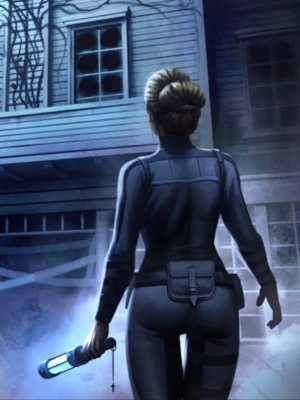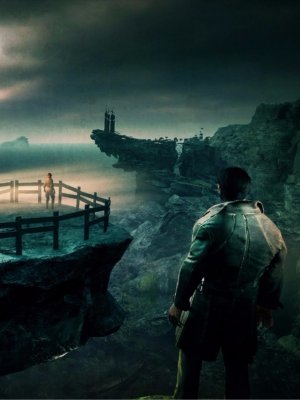Alien: Isolation

In addition, of every last one of games I’ve played in the not so distant past, Alien: Isolation is most worth appreciating. The last item has ended up being just as fulfilling as the different demos I’ve played over the recent months; the diversion succeeds on various levels.
It’s a grand bit of fan administration, the most perfectly and splendidly acknowledged virtual adjustment of a motion picture universe ever dedicated to polygons, yet its dedication to the source material doesn’t take on at the cost of playability.
It couldn’t have happened to a superior film. Outsider wasn’t just an original bit of sci-fi film, yet a point of interest work of frightfulness too. Inventive Assembly has drawn most intensely on that recent component to make Isolation, reconsidering the Alien true to life universe as something along the lines of Enemy Zero or Clock Tower:

A full-length story of the “last young lady” figure of speech (which Alien itself utilized by making Ellen Ripley the sole survivor of the Nostromo episode) in which an unyielding, indestructible monster stalks the player all through the aggregate of the experience.
Isolation adjusts to a couple of contraptions keeping in mind the end goal to make it an intriguing game, the most recognizable of which is the way that the sole xenomorph in sprawling Sevastopol Station quite often is by all accounts lurking in the shadows where hero Amanda Ripley (girl of Ellen, dead set to discover her missing mother) happens to be.
This is even more a fundamental detestable than all else, however, and regardless the diversion does back off time to time.
Truth be told, that may be what most inspires me about Isolation as such, a few hours into the story. Innovative Assembly hasn’t just imitated the look and qualities of Alien additionally its pacing. The story takes truly a while to bring you to the point where you’re confronting genuine threat; for the first hour (or more) of the game, Amanda is sheltered from any yet minor ecological dangers. Anyway, as with the Nostromo team (or the marines of the Sulaco, in one of the few likenesses Isolation has with the second film in the establishment), once the xenomorph enters the conflict, everything progressions.
Confinement capitalizes on the feature diversion medium as a movement of frightfulness. Where the Alien films have a tendency to include a cast of characters gradually being whittled down in numbers by the outsider’s predation with a specific end goal to heighten strain and express the risk inalienable in the animal, Isolation is all the more a performance issue. Amanda and the player turn into the “team,” biting the dust at the mammoth’s hands and afterward keeping on attempting once more.

That is not to say this is a completely lone undertaking — in spite of the diversion’s title, you’re not completely disconnected from others. Other than the medium’s presently standard voices-in-the-ear offering exhortation and piece from the individuals who partner themselves with Amanda along her trip, Sevastopol is additionally littered with sound logs on simple tapes, Bioshock-style.
Still, this is really a performance experience, and all things considered it doesn’t play at all like a first-individual shooter, in spite of wrapping itself in the traditions of the class. Disconnection moves back many years of Alien universe feature diversion adjustments, which have demeaned the dread and vicinity of the eponymous life structures to serve as minor cannon grub.
From incalculable shooters where they drop like flies to brawlers like Capcom’s (in fact fun!) Alien Vs. Predator, few recreations have ever treated the xenomorph with the kind of magnificent feeling of threat that Alien (and even Alien 3, for all its imperfections) pervaded the animal with.

At the same time here, it serves the same part as the Nemesis from Resident Evil 3 or Silent Hill’s Pyramid Head: An unstoppable power of nature that must be dodged or evaded, never battled hand-to-hand.
A piece of the virtuoso of Isolation is that it makes clear from the begin the routines you have to utilize to get by here — move gradually, stay quiet — and afterward reliably overturns your circumstance over and over so that this logic is more effortlessly said than done.
It’s just fine to crawl noiselessly outside of anyone’s ability to see when its fair you and the Big Chap in a friendless stretch of station. Be that as it may that gets to be a great deal more troublesome when the frantic last survivors of Sevastopol appear to treat you like an intruder, or you’re compelled to make a distraught dash for the passageway as a clock runs down, or you need to initiate a machine framework that enacts whooping klaxons that make it difficult to track the outsider’s developments through the station by sound.
Disconnection always raises the circumstances, acquainting new wrinkles with the undertaking of getting away from the animal hiding out of sight and constraining you to adjust your strategies to turbulent or erratic circumstances.
 But, the game doesn’t just work at full throttle constantly. Like the film that enlivened it, it’s an arrangement of good and bad times.
But, the game doesn’t just work at full throttle constantly. Like the film that enlivened it, it’s an arrangement of good and bad times.
You push through expanded groupings of excruciating strain, snippets of edgy activity, and times of relative tranquil to regroup and recapture your orientation.
The plot does take after recognizable plot beats… in spite of the fact that I’m still moderately ahead of schedule in the escapade (I accept; possibly it’s simply a super short game), so there’s a lot of time for the diversion to shock me.
Yet as it were, I don’t generally require Isolation to amaze me. The quality of what Creative Assembly has done here originates from the way they’ve given us an opportunity to enter the universe of a film establishment that is ended up so well known to gamers as to feel overdone, yet have destroyed it a way that no other diversion to date has endeavored.








